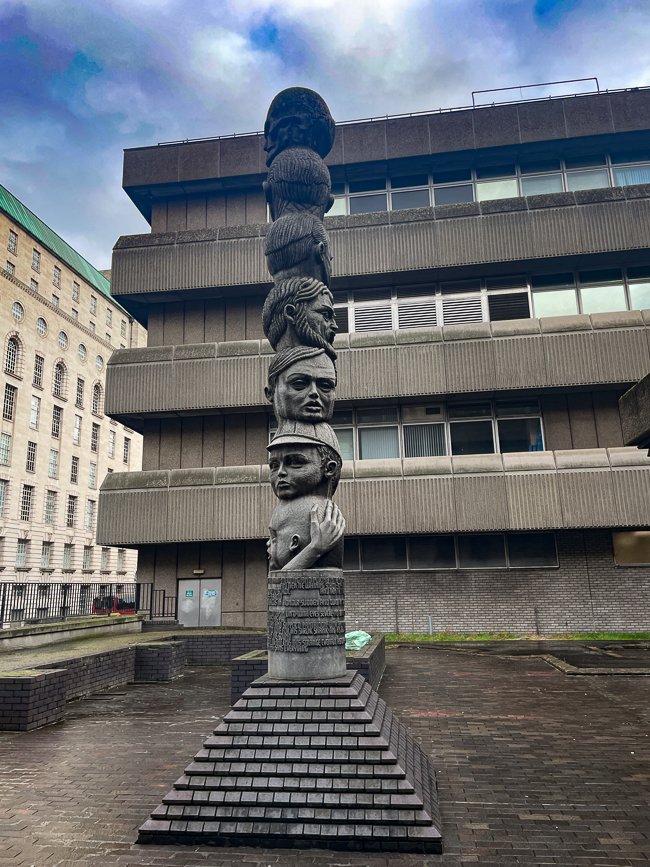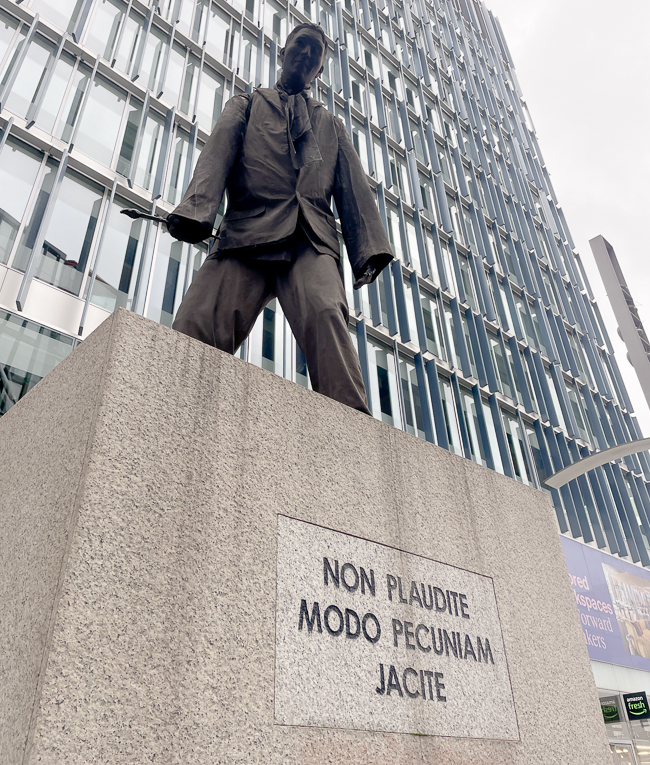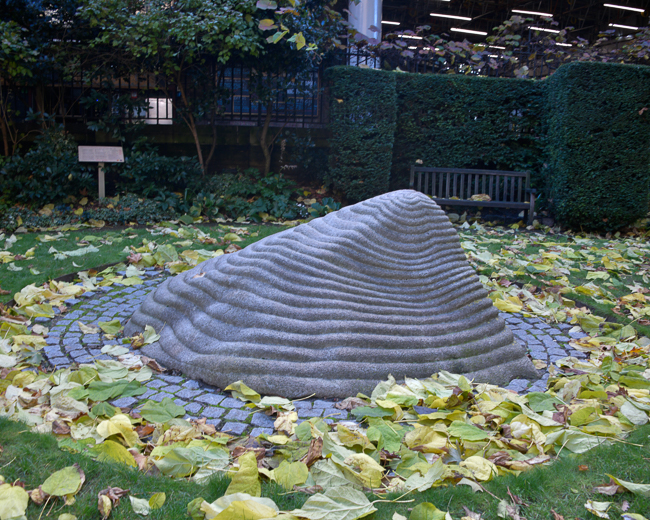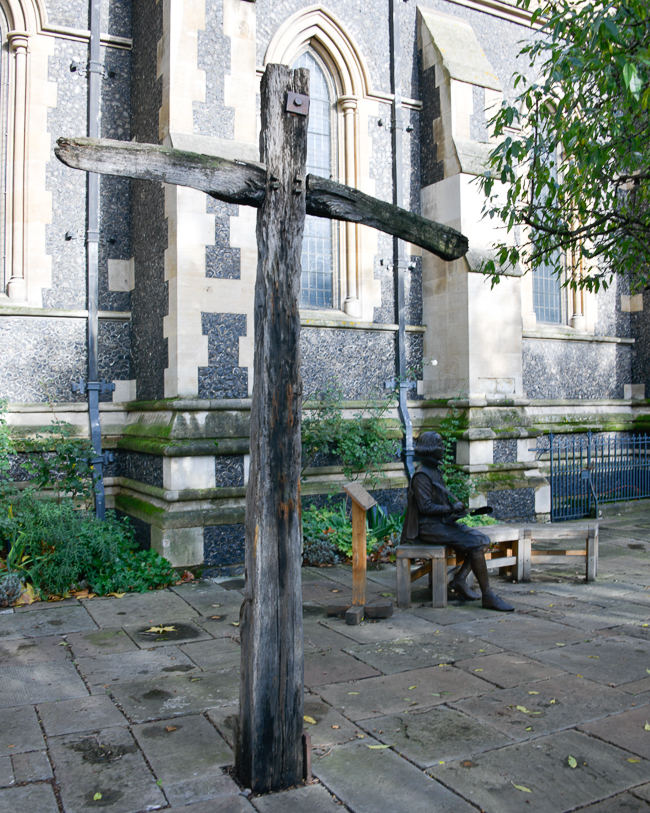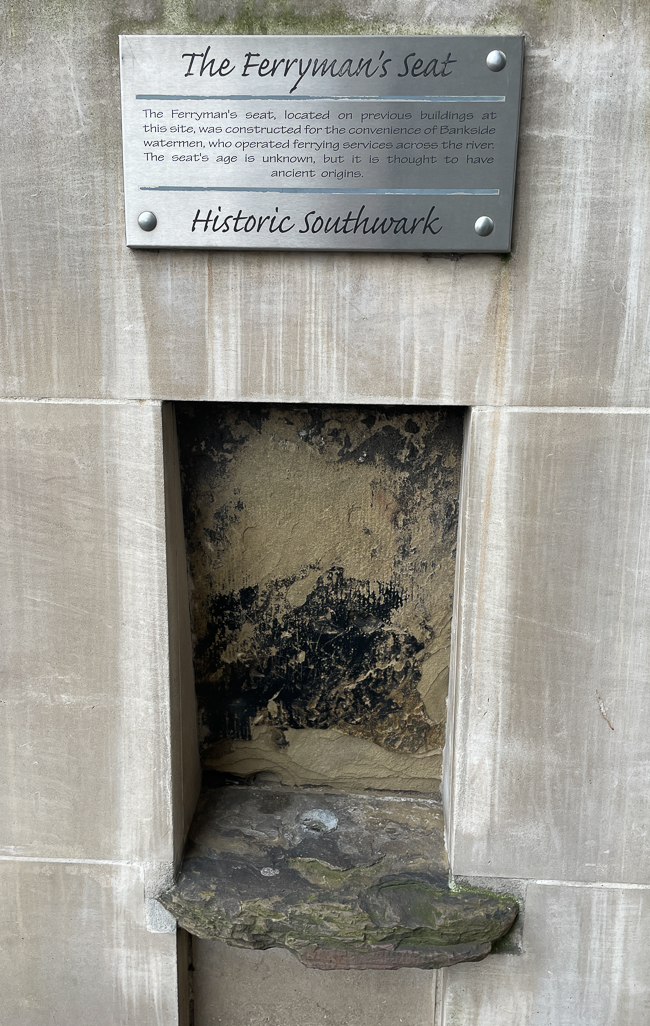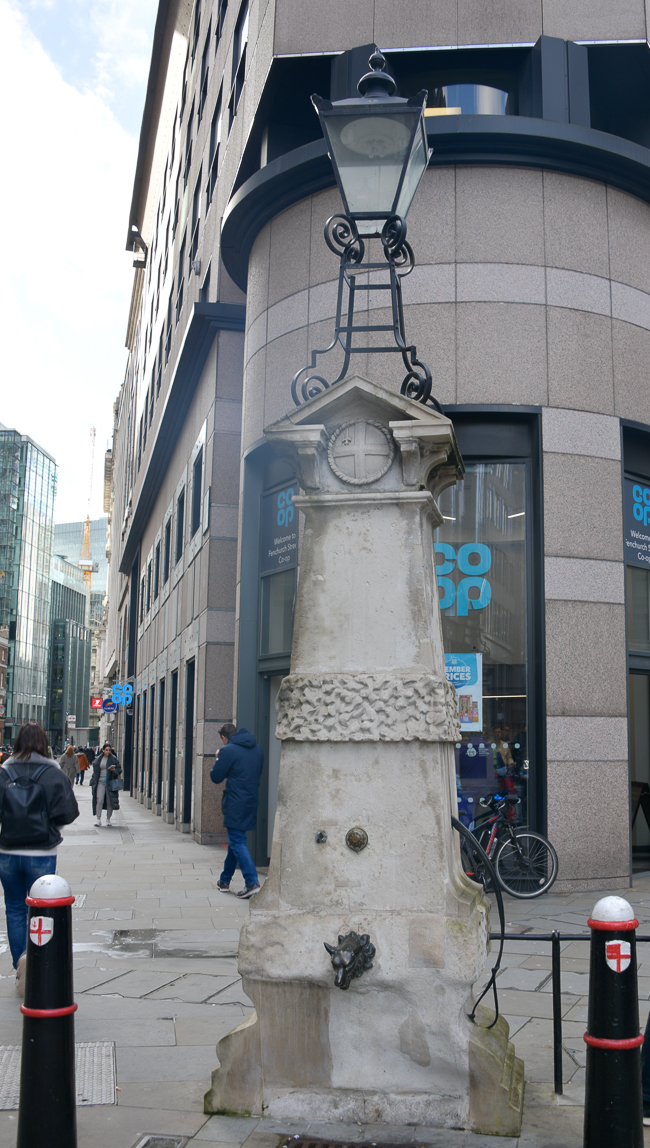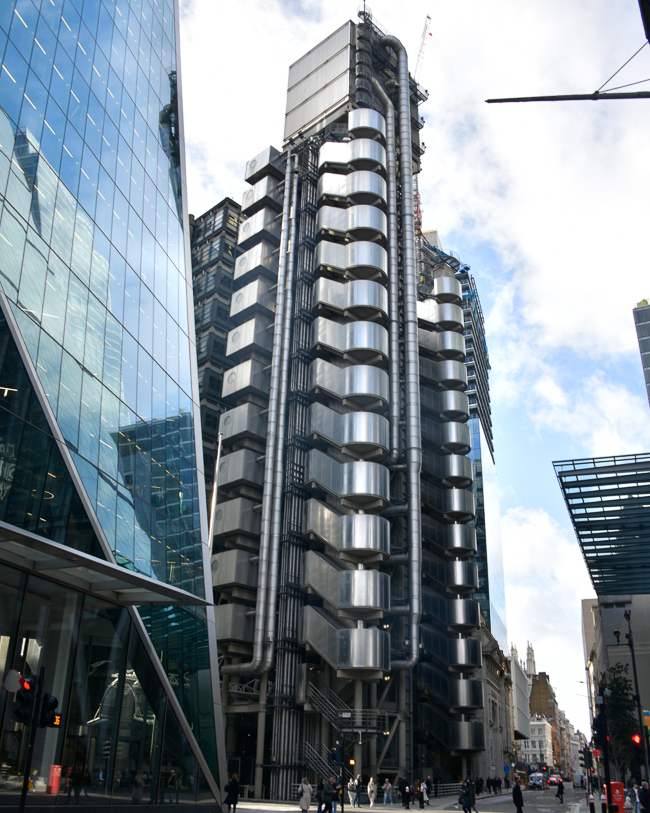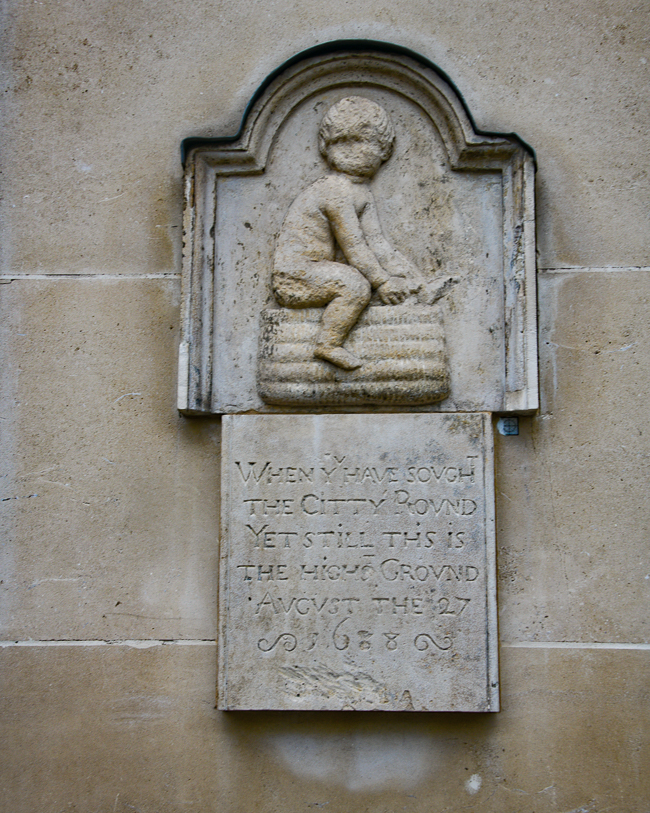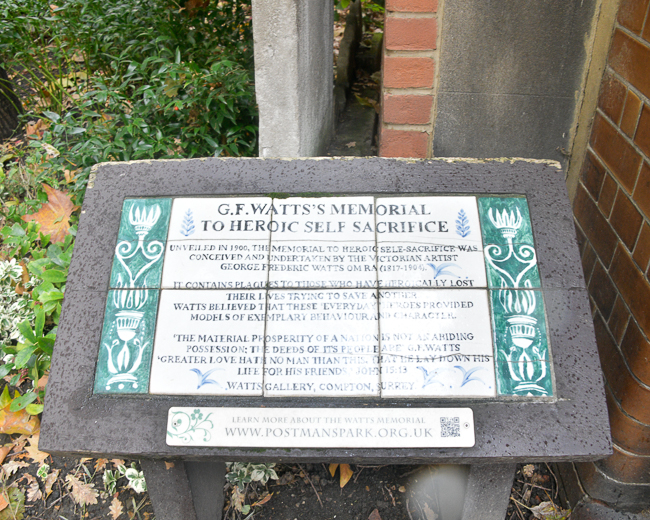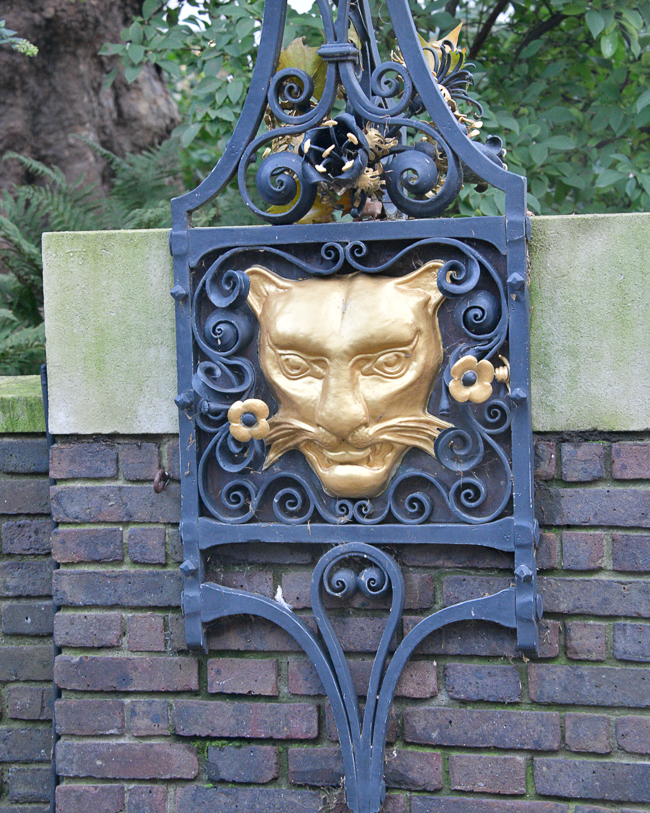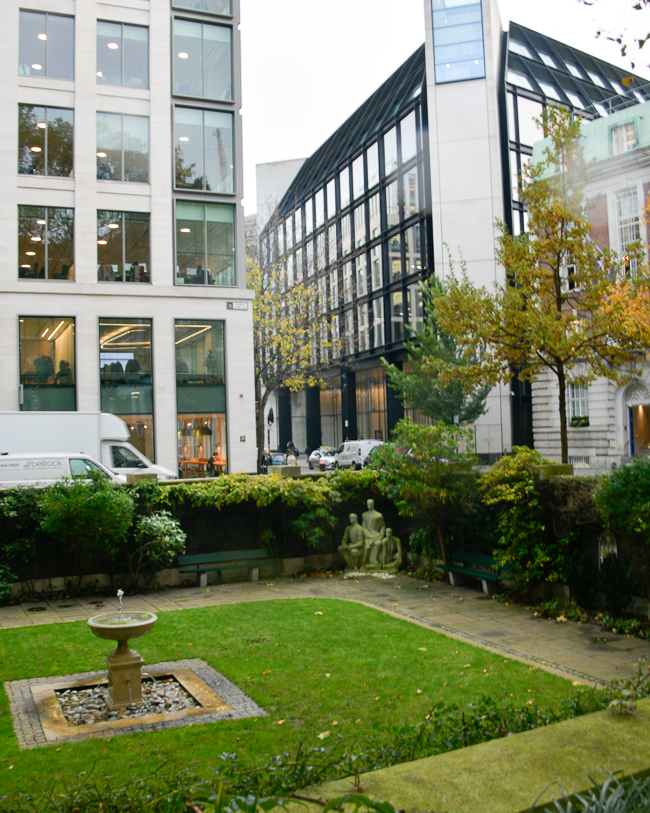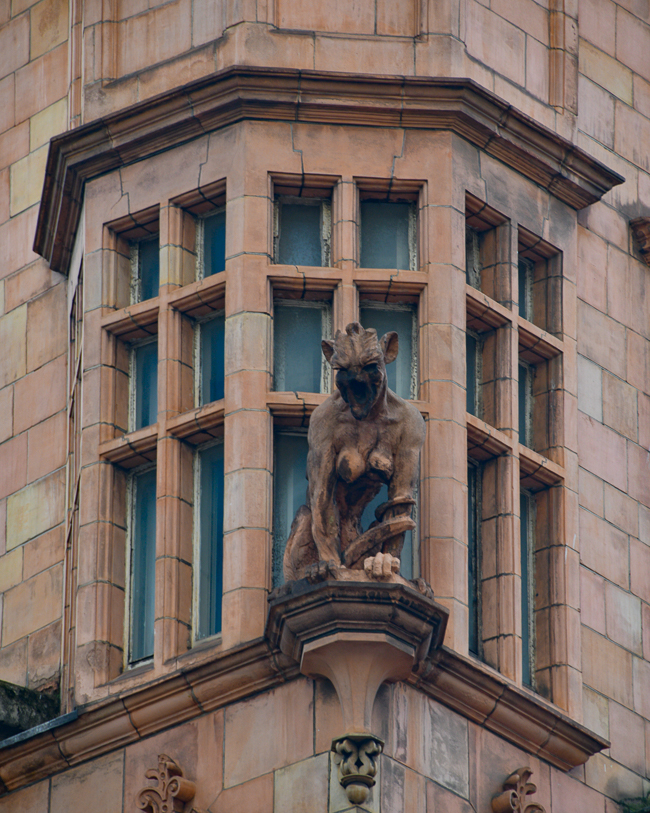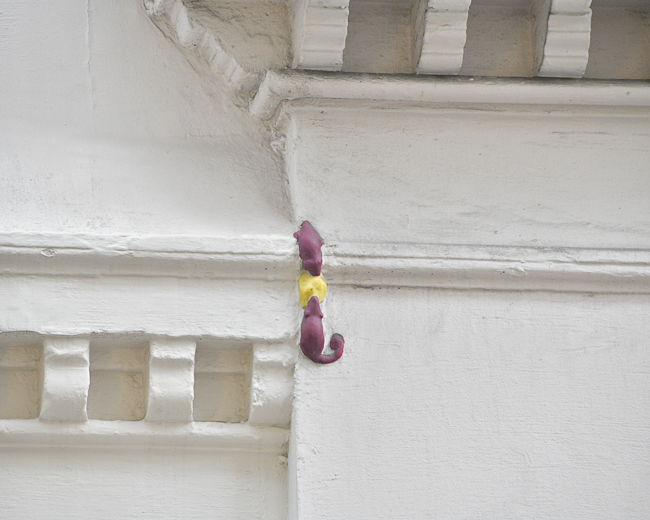November 2023
I am in London to enjoy the company of friends, see a few plays, eat some good food, and just enjoy the architecture and people of this wonderful city.
I am staying right on the Thames at Broken Wharf, looking down on a spot where I went mudlarking last year. It affords me a view of the Millennium Bridge from my window.
On the 13th of November, I did nothing but walk and walk and walk The City of London and the Southbank areas of London. This post is just a little of what I encountered.
Public Art
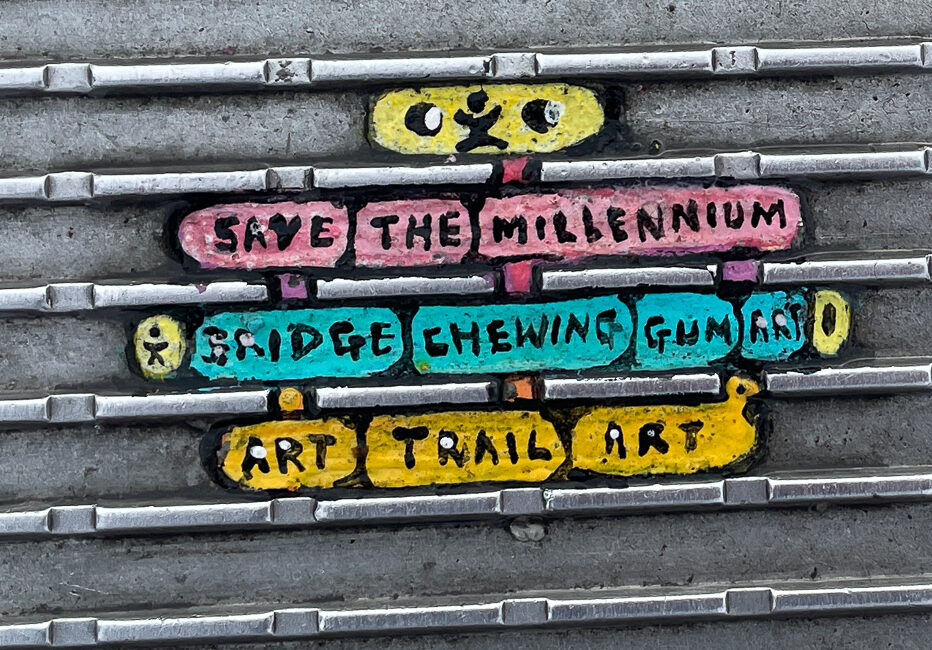
It is always fun to see what people are taking pictures of, most being selfies. So, as I was wandering, taking photos of this art on the bridge, I noticed that others had seen it too. These are itty bitty pieces of art that were once chewing gum. This is the work of Ben Wilson. For over ten years, he has been changing the chewing gum blobs you see on all the streets in the world, but in this case, London, into art. He uses a blowtorch, acrylic paint, and lacquer. Wilson has been arrested several times, but since he sticks to gum, he is not actually doing anything illegal. I was glad to grab these shots, as I have read the city plans on getting rid of them in a clean-up job next month. I doubt it will matter. I am sure Wilson will be back. He has a never-ending canvas.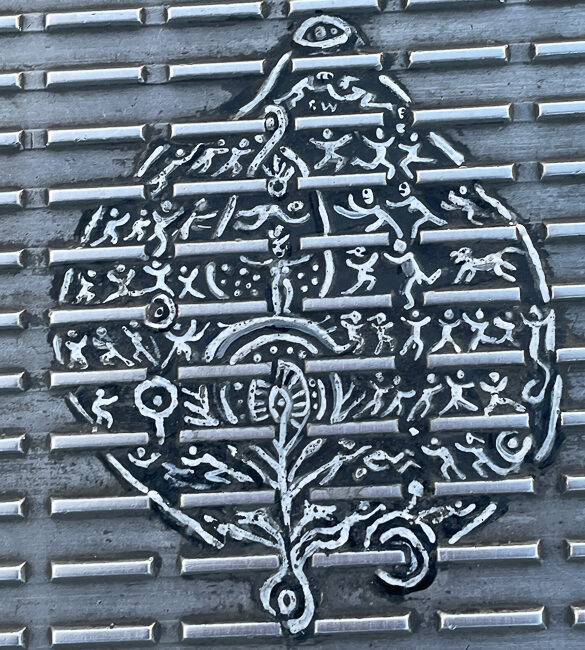
On my very last day in London, I was looking out my window at the Millennium Bridge and saw what I thought might be the artist. I dashed over and, sure enough, was able to get a picture of the man in action.
The Seven Ages of Man
The Seven Ages of Man is a major piece of work by Richard Kindersley, who studied lettering and sculpture at Cambridge School of Art and in the workshop of his father, David Kindersley, who was also a noted stone carver.
This is an animatronic man. Although the day I was there, he did not move. I have seen pictures of it in varying positions. Apparently, it will mimic someone standing and posing in front of it. The plinth reads, “Don’t Applause, Just throw Money”. The piece stands near the Tate Modern and is by the artist collective Greyworld.
Historical Tidbits
The Southwark Cathedral, while easy to find, is tucked aside a considerable amount of construction, somewhat under the Southwark Bridge and behind the Borough Market.
The area has been a place of Christian worship for more than 1,000 years, but the cathedral dates to the creation of the Diocese of Southwark in 1905.
The shell above is a monument to Mahomet Weyonomon. (c. 1700 – 11 August 1736). He was a Native American tribal chieftain of the Mohegan tribe of Connecticut. He traveled to England in 1735 to petition King George II for better treatment of his people.
He contracted smallpox before ever being able to see the King. As a foreigner, he wasn’t able to be buried in the church, so he was quietly buried outside in the dead of night.
In November 2006, Queen Elizabeth II dedicated the memorial. The sculpture is by British artist Peter Randall-Page.
Seated on the bench behind the cross is a statue of William Shakespeare. There is also one inside of the church. Shakespeare was a member of the parish, and there is a celebration at the cathedral every year on his birthday.
Also in the area of the Southwark bridge is the last remaining of a boatman’s perch that apparently were all over the south bank of the Thames.
Before the London Bridge was built, the only way to cross was by “wherrymen”. They would perch on these stones, waiting for a passenger.
We so often pass things like this in the streets of any city, and in truth, this pump has a bit of a macabre story attached. Water fountains like this can be found all over many cities in the world as a source of fresh water for the neighborhood. The Algate fountain was prized due to the fact that the water was rich in calcium. Unfortunately, after a period of time when people complained that the water tasted funny, they found that the river that fed the pump flowed right through a cemetery, picking up a lot more than the calcium from the bones. This is probably not as bad as the Cholera Pump in Broad Street that I visited last December, but stomach-churning nonetheless.
Not far from the Aldgate pump is this striking building. Arch Daily put it perfectly: Completed in 1986, the Lloyd’s building brought a high-tech architectural aesthetic to the medieval financial district of London.
No one knows anything about this little sculpture, and yet it has pride of place. The plaque below was not part of the original. It is not where it originally started, where that was no one knows, and what he means and what he is doing is just as lost. Let me lift just one line from Hidden London’s explanation: What does the stone depict? Most authorities have been in no doubt that the boy is sitting on a bread pannier, but others have supposed it to be a fruit basket or a woolsack, while one commentator felt that it “resembles more a coil of rope.”
Parks
As in most big cities, the tiny parks that are scattered around are always a pleasure to find, if just to sit. Postman’s Park is exactly that. The plaque above sits near a long row of covered benches, a nice respite from the rain that was beginning to come down.
The plaque from 1900 was a project by George Frederic Watts honoring the bravery of ordinary people, policemen, and firemen who gave their lives to save others. Throughout the park, you will find individual plaques to the heroes themselves.
This gold leopard is the trademark of The Worshipful Company of Goldsmiths. Not only are they the landowners of this public garden, but they are also one of the Twelve Great Livery Companies of the City of London.
Their guild was established in 1327 and was responsible for the inspection and branding of all precious metals within the realm of the ruling monarchs.
While hard to tell, the garden is actually sunken. In the corner, you can see the sculpture “The Three Printers.” The piece was commissioned by the Westminster Press Group and is the work of Wilfred Dudeney. It depicts a trio of figures that represent the newspaper trade that was once prevalent along Fleet Street.
Waaay high up on a building on Cornhill are a series of terracotta devils. The building itself was designed by architect Ernest Augustus Runtz in 1893. It is said that the vicar of St Peter’s Cornhill was unhappy with the plans for this new terracotta structure as it strayed onto the church’s property. Runtz had to change his plans, incurring costs and frustration, and so he added the ornamentation to get back at the vicar.
Little things like this always intrigue me, and if I learn of one, I go track it down. Who really knows why these two mice are on the side of a building? But there is an adorable story of how they came to be, of course, most likely made up, but cute nonetheless.
It is said that in 1862, while the building was under construction, two workers started arguing over the whereabouts of their lunch. The argument eventually came to fisticuffs, with one man falling to his death. Only later was the lunch found with two mice eating away at it. To commemorate their fallen comrade, the workers added the sculpture.
London is a magical city, and the heart of it The City of London is a paradise for history lovers, architecture lovers, and the curious. I will never tire of wandering aimlessly through its streets.

